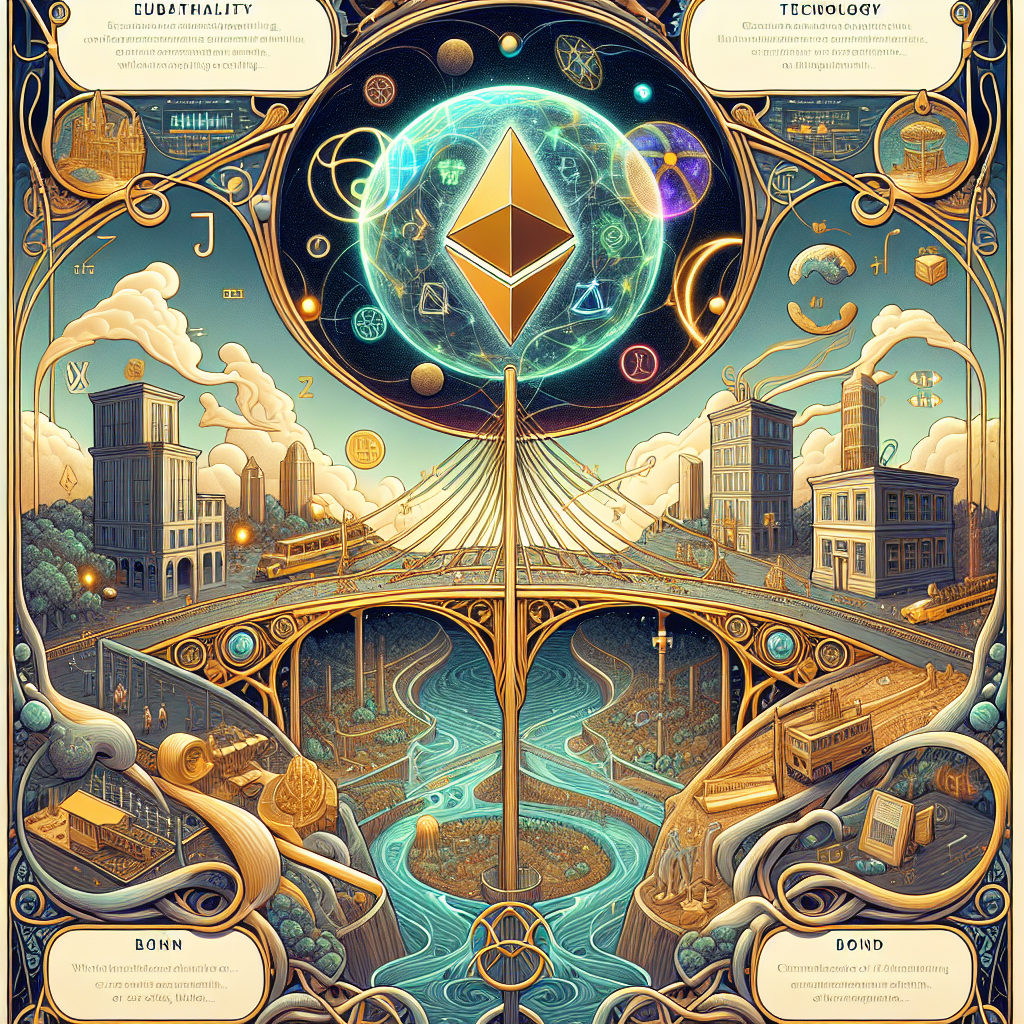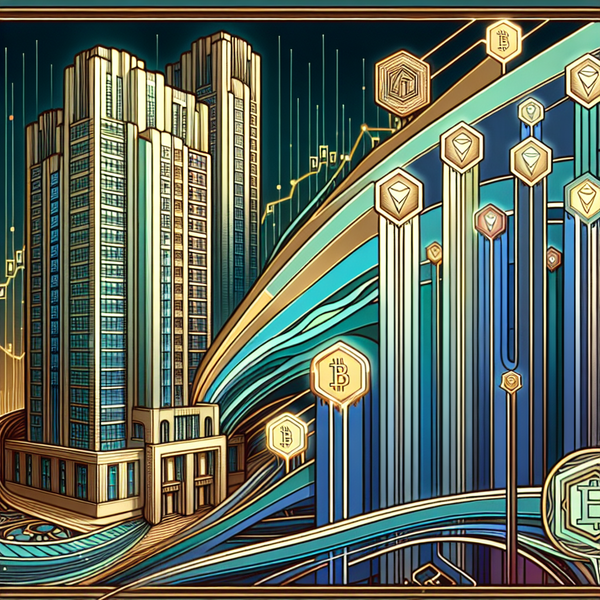Aurora's Cross-Chain Gambit: Why NEAR Protocol's Ethereum Compatibility Layer Might Be the Dark Horse in the RWA Race

In the rapidly evolving landscape of tokenized real-world assets (RWAs), a quiet contender has been steadily positioning itself for what might be the most strategic play in the space. Aurora, NEAR Protocol's Ethereum compatibility layer, combines the best of two worlds in a way that could fundamentally change how we approach RWA tokenization. Let's unpack why this under-the-radar platform might just become the dark horse in the RWA race.
The Hybrid Advantage: EVM Compatibility Meets NEAR's Scalability
Aurora's unique value proposition stems from its hybrid nature. Built as a Layer 2 solution on NEAR Protocol, Aurora offers complete Ethereum Virtual Machine (EVM) compatibility while leveraging NEAR's inherent scalability and performance benefits. This means developers can deploy Ethereum smart contracts on Aurora without rewriting a single line of code—they simply need to update the RPC endpoint.
For RWA projects, this compatibility represents the holy grail: access to Ethereum's mature developer ecosystem, tools, and liquidity without the prohibitive gas costs and network congestion. As one project lead recently told me, 'It's like having your cake and eating it too... if your cake also happened to be 1000x cheaper and faster.'
The Economics of Tokenization: A Cost Comparison
Let's talk numbers, shall we? The economics of RWA tokenization can make or break adoption, particularly when dealing with fractional ownership models or frequent transfers.
A standard ERC-20 token transfer on Ethereum can cost anywhere from a few dollars to tens of dollars depending on network congestion. On Aurora? We're looking at less than $0.01 per transaction. This is not a typo—Aurora's gas fees are consistently below one cent.
For context, imagine tokenizing a real estate portfolio with 100 properties, each requiring multiple transactions for issuance, management, and dividend distribution. On Ethereum, this operation could easily cost thousands of dollars in gas fees alone. On Aurora, you'd barely notice the transaction costs on your balance sheet.
This cost advantage becomes even more pronounced when you factor in the complex smart contract interactions typically required for RWA compliance mechanisms, such as KYC verification, transfer restrictions, and regulatory reporting.
Aurora's Secret Weapon: The Cross-Chain Bridge Advantage
Perhaps the most compelling yet underappreciated aspect of Aurora's offering is its approach to cross-chain bridging. The platform's Rainbow Bridge facilitates seamless asset transfers between NEAR and Ethereum, but Aurora has taken this a step further with its Forwarder tool.
Unlike traditional bridges that rely on multi-signature schemes and multi-party computation—both potential points of failure—Aurora's Forwarder enables permissionless, trustless direct withdrawals from centralized exchanges to Aurora chains. This effectively reduces the attack surface common in traditional bridging processes, a critical consideration when dealing with high-value RWAs.
Consider the implications: institutional investors can move assets directly from exchanges to Aurora-based RWA platforms without navigating the technical complexities and security risks of conventional bridge mechanisms. In a market where security breaches have drained billions from cross-chain bridges, Aurora's approach represents a significant security upgrade.
RWA Projects Blazing Trails on Aurora
Aurora's appeal to RWA issuers lies in its customizability and enterprise-friendly features. Through Aurora Silos (customizable Virtual Chains), asset issuers can fine-tune their blockchain environments with bespoke token economics and permission controls specifically designed for their asset class and business requirements.
By 2025, Aurora aims to support 1,000 Virtual Chains, many of which will cater to specific RWA categories. The platform is already working with institutional clients to integrate large-scale data analytics—covering over 1.4 billion monthly active devices—to refine RWA valuations for real estate and renewable energy assets.
Perhaps most importantly, Aurora is addressing the liquidity constraints that have historically hampered RWA adoption. Its marketing cloud services enable multi-channel investor outreach, boosting project visibility and expanding the potential investor base. When combined with AI-driven investor engagement tools, these capabilities create a compelling ecosystem for RWA issuers looking to maximize both operational efficiency and market reach.
The Elephant in the Room: Ethereum's Scaling Solutions
Of course, we need to address the looming question: does Aurora risk becoming obsolete if Ethereum finally solves its scaling issues?
Ethereum has indeed made significant strides in scaling through both Layer 1 upgrades like Pectra and the proliferation of Layer 2 solutions such as Base, Optimism, and Arbitrum. As of 2025, these developments have increased Ethereum's transaction capacity by approximately 17 times and substantially reduced gas fees.
However, Aurora's value proposition extends beyond mere transaction throughput and cost savings. Its integration with NEAR Protocol provides unique advantages in terms of developer experience, customizability, and interoperability that even a scaled Ethereum might not match.
Furthermore, Aurora's focus on purpose-built Virtual Chains for specific RWA use cases represents a level of specialization that general-purpose platforms might struggle to replicate. The ability to fine-tune blockchain parameters for particular asset classes—whether commercial real estate, carbon credits, or intellectual property rights—creates an environment optimized for RWA operations rather than a one-size-fits-all solution.
The Road Ahead: Challenges and Opportunities
Despite its promising position, Aurora faces several challenges in the RWA race. The platform must continue to differentiate itself in an increasingly competitive landscape where multiple chains are vying for RWA market share. Additionally, broader adoption will require overcoming the network effects already established by Ethereum and its ecosystem.
However, Aurora's hybrid approach—leveraging both Ethereum compatibility and NEAR's innovations—positions it uniquely in the market. By combining the familiarity of Ethereum's tooling with the performance benefits of NEAR, Aurora creates a compelling middle ground that could attract RWA issuers seeking the best of both worlds.
As one blockchain architect rather dryly put it to me, 'Aurora isn't trying to reinvent the wheel—it's just making the wheel faster, cheaper, and less likely to fall off while you're driving.'
Conclusion: The Dark Horse Strategy
Aurora's cross-chain gambit represents a calculated bet on the future of RWA tokenization—one that acknowledges both the dominance of Ethereum and the need for specialized infrastructure designed specifically for real-world assets.
By offering Ethereum's developer experience without its limitations, Aurora has created a platform that addresses the key pain points in RWA tokenization: cost, scalability, security, and customizability. This combination of attributes might just be the perfect formula for the next generation of tokenized assets.
In the race to capture the multi-trillion-dollar RWA market, sometimes it's not the flashiest horse that wins—it's the one with the right combination of speed, endurance, and adaptability. Aurora might just be that dark horse, quietly building the infrastructure that could power the future of tokenized real-world assets.
And in a market obsessed with flashy new protocols and revolutionary technologies, perhaps the most revolutionary approach is the pragmatic one: building bridges rather than islands, enhancing rather than replacing, and focusing on solving real problems for real assets in the real world.




